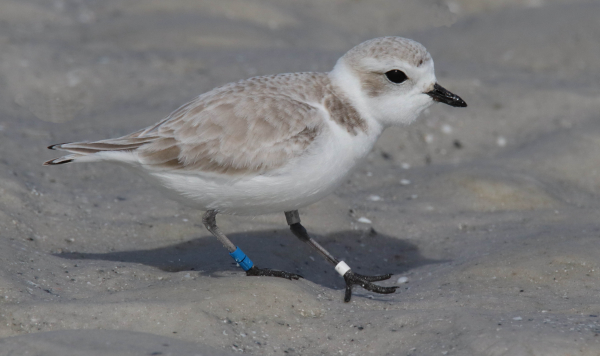
Did I mention that it was also 70 degrees with no wind? But best of all, there seemed to be a unending abundance of birds on hand, mostly shorebirds – plovers and sandpipers – although there were representatives of other groups of birds too – Ospreys, pelicans, terns, gulls, wading birds, shrikes, doves, songbirds, and even parakeets. Oh what fun I had, and oh what fulfilling fotos I managed to take. When was the last time you took hundreds of photographs of countless birds to the point where the battery in your camera went dead? WoW, did I have fun!
Perhaps the most enjoyable and the most fulfilling part of my photo activities happened when I was in position to photograph a given bird, perhaps a Snowy Plover, and other plovers and sandpipers would filter into the surrounding area. Then suddenly I’d find myself surrounded by tiny plovers – Piping Plovers, more Snowys, and Semipalmated Sandpipers – literally at my feet. Once, I fully expected a little Piper to walk right over one of my hiking shoes. Usually, to see a single Piping Plover and get some quality photos is a rare opportunity, but during photo sessions at DeSoto, there was no end to the photo ops – until my battery went dead, or the sun set.
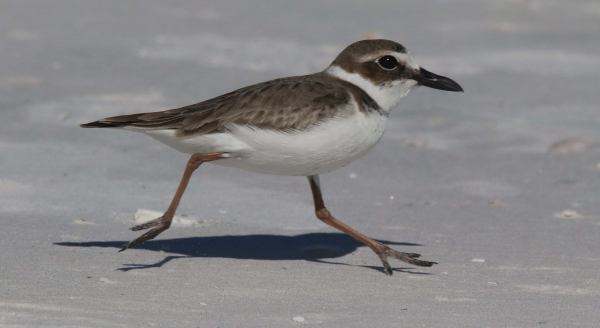
The other thing that was so enchanting was the feeling I got from being in such close contact with the little plovers – plovers more than sandpipers. They really made an impression on me, and I enjoyed spending time in close proximity to each one. This was partly due to the fact that there were soo many tiny plovers, running in little bursts of 3 or 4 steps, stopping, taking 3 more steps, picking at a food item, and continuing their quest for food. Many of my photos convey that warm feeling to me, and I hope they pass some level of cuteness and attraction to you and anyone viewing the images. The little plovers were clearly favorite Florida photo subjects and they provided a pleasing level of avian connections, one on one and as a group.
Of course, you will immediately notice that some of the plovers have bands on their legs, some being color-coded so researchers can collect information about individual birds that may also provide information about their greater population and species as a whole. I will provide the band info that I documented on Piping Plovers, Snowy Plovers, and an American Oystercatcher to specific researchers. I think most of the birds were banded as hatchlings within their nesting range, although some could be banded during migration or at a wintering area.
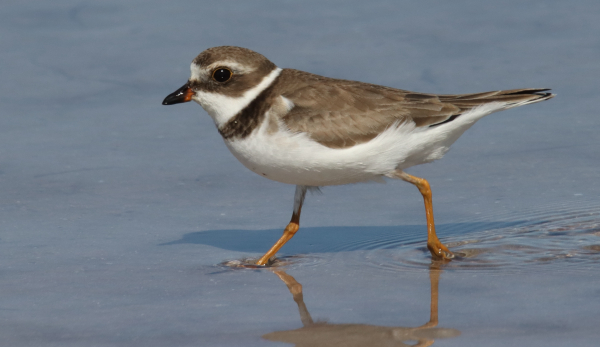
Where did all this take place? At the most popular birding location in Florida, adjacent to the beach at the western edge of Tampa Bay at Fort DeSoto State Park. I focused my time and attention to an offshore lagoon about 70 yards inland from the wave action on the beach, which is where the shorebirds were finding all they needed; ample food and resting areas, and an abundance of avian eyes to watch for predators and other potential dangers.
Back to the great photo conditions, I definitely wasn’t relying on my luck to have optimum photo weather and sunlight. Heck no; as always I watched the weather forecasts to ensure I would have the best forecast for sunny days possible during my visit. After all, it took a 3 day 2,100 mile drive broken only by 2 overnight sleep periods to get there, so while I had plenty of other incentive for choosing the Tampa-St. Petersburg area for my trip, I spent 5 days in the area and all were filled with rich sunshine and photo opportunities. (As an aside, I also hugely enjoyed the opportunity to visit my family, with special times spent with my 3 nephews, all under 4 years of age – talk about a fun, lively, charming group of little boys!)
Although Fort DeSoto Park is the most visited location by birders in Florida, it is miles in length, and even though photographers tend to emphasize visiting the “north” side of the beach area, few people are attracted to the back lagoon. Almost all other beachgoers concentrate on the Gulf side of the beach for sunbathing, walking, shelling, relaxing, and enjoying the beach experience, leaving the back bay to many birds and a few birders. There, it’s always enjoyable to share some time with folks with binoculars, spotting scopes, and cameras in the field.
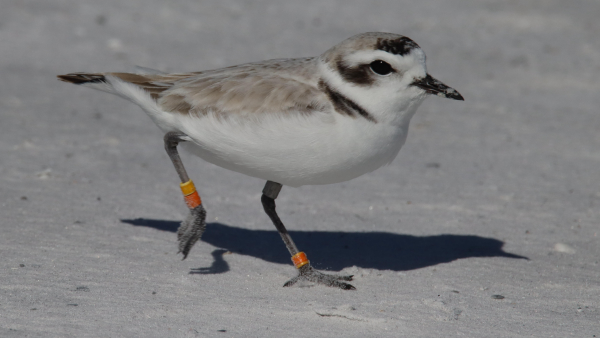
The Tech Side
As you may remember, I’ve been opting to use a higher ISO setting on my digital camera during the last quarter of 2023, and although the sunlight was full and seemingly pretty intense, I stayed with an 800 ISO most of the time to get an amply wide aperture with more than ample shutter speeds. The plovers and sandpipers that I was focused on tended to move quickly and I wanted to try to stop action in the midst of their activity thrusts.
I always emphasize using the Av camera setting to others, and personally always use the Av mode, which allows you to choose the aperture you wish for a wide area in focus (f14 for example) or a narrow area in focus (f5). Then, in the Av mode the camera automatically coincides the aperture setting with the shutter speed.
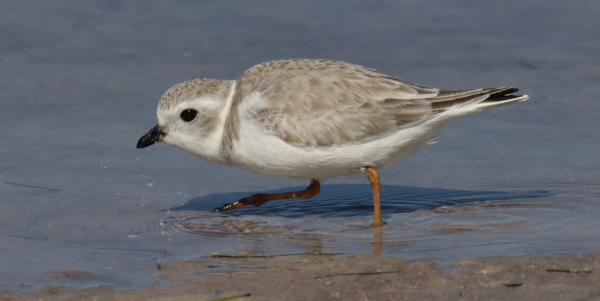
As I photograph, I monitor the shutter speed and like to keep it at 1/1,000 of faster to stop avian motion, keep the photos sharp, and compensate for handholding my lens when zoomed to 600mm (the lens also has image stabilization - IS). If the shutter speed falls below 1/500, I dial the aperture down so the shutter speed will be faster under the ambient conditions. Obviously, the aperture and shutter speed are interconnected; changing one will effect/change the other.
The continuous shutter mode is also helpful during fast action opportunities; depending on your model, your camera will take in the neighborhood of 5 to a dozen photos per second when you hold the shutter button down. I also tend to take 2 photos at a time when birds are seemingly stationary, which provides an option if the bird moves its head or takes a step.
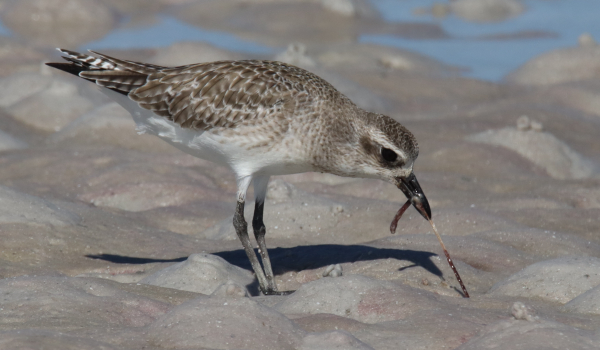
As always, I hold my breath and lightly press the shutter button when I take a photo, and I’m always in a position where my shadow points at my subject – with the sun at my back and the birds in front of me. When standing, I stabilize my camera by holding my arms against my sides or against my chest when focused on a bird.
While that tech stuff is sure important, it’s dry compared to the excitement and enjoyment of spending time among a variety of birds, taking photos of them, and enjoying the process and the trust of the birds that ultimately surrounded me. I visited other Florida birding hotspots, but none of the other birds touched me in quite the same way as the roly-poly little plovers. With a new year ahead of us, plan to make it a banner year of bird photography, when you spend a little more time in the field and hone your techniques, while visiting some new locations as the birds we encounter vary with the changing seasons. Best Wishes for a fruitful year of bird photography in 2024!
Article and photographs by Paul Konrad
Share your bird photos and birding experiences at editorstbw2@gmail.com